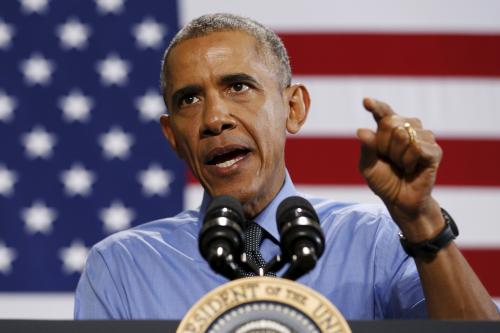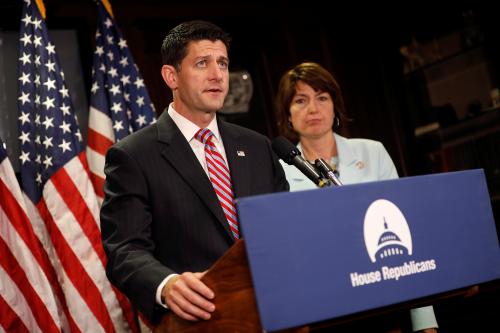This post was originally published on WSJ.com.
Congress is on summer vacation—a seven-week recess, designed to accommodate the Republican and Democratic conventions and lawmakers’ traditional August break. If lawmakers went home for the summer with report cards like their K-12 peers, how would their performance stack up? Here’s a look at one of Congress’s major responsibilities: spending bills.
Follows rules: C
Opposition from members of the Freedom Caucus and the Republican Study Committee led the House to get stuck at square one of the process: adopting a budget resolution. Without action in the lower chamber, the Senate had little reason to spend time on that task.
Failure to adopt a budget resolution–legislation both sides tend to use to offer “gotcha” amendments—is not uncommon. Congress has fallback options, but House conservatives opposed those as well, ultimately forcing the House, for the first time since the modern budget process was established in 1974, to consider spending bills without a budget resolution or its equivalent in place. (The Senate, meanwhile, used a backup procedure provided for in last October’s budget deal.)
Things did not improve for the House when spending bills came to the floor. In early June, Speaker Paul Ryan announced that amendment opportunities would be limited. This move, largely in response to a controversial provision involving protections for LGBT federal contractors, was unusual but not unprecedented: Democrats resorted to similar restrictions in 2009.
Uses time wisely: B
Committee work provided perhaps the brightest spot in Congress’s work on spending bills this year. The House and Senate Appropriations Committees managed to draft each of the 12 spending bills before the summer recess. This is an improvement on some recent years; in 2014, the Senate panel left four measures undone (in part out of concern about embarrassing amendments), and in 2010, the House Appropriations Committee approved only two. Even if these bills do not pass, complete committee drafts provide a solid framework for an omnibus package down the line.
Still, despite the committees’ work, few bills were passed by either chamber. The House completed action on five; the Senate passed three; none went to the president for his signature. This progress is paltry but not noticeably worse than efforts in recent presidential-election years. In 2012, the House completed action on seven measures before leaving for the summer, and the Senate finished none. In 2008, neither chamber passed a single spending bill before the August break.
Plays well with others: F
One of Congress’s highest-profile legislative standoffs this year has been over an emergency response to address the Zika outbreak. The Obama administration requested $1.9 billion in February to fight Zika. In May, the Senate rejected a proposal to fund the administration’s full request before passing a $1.1 billion measure without offsets. The House passed a $622 million package that made corresponding cuts elsewhere in the federal budget, including from existing health programs. Democrats blocked a Republican-led compromise between the House and Senate versions that would have provided $1.1 billion toward Zika efforts while excluding funds from Planned Parenthood. No deal was reached, and members of both parties blamed inaction on the other side.
Completes assignments on time: Incomplete
The House is scheduled to be in session for just four weeks in September before recessing for the election. A continuing resolution, or temporary spending measure, is likely, though its duration isn’t yet clear.
One option, favored by appropriators, would involve a short-term package to carry programs through the election. Congress would then return in a lame-duck session to finish the job. A group of House conservatives, as well as some senators (including Senate Majority Whip John Cornyn), have pushed for a longer CR that would run through March 2017. A similar approach was used during the past two presidential-election years. Doing this would put the task of funding the government on a potential collision course with the need to raise the debt ceiling next March.
Members of Congress are spending the next few weeks in their states and districts, with many concentrating on their own re-election campaigns. Although some may face questions from voters about their work, the real challenges will occur when legislators return to Washington in September.






Commentary
What Congress Has, and Hasn’t, Accomplished on Spending Legislation
August 5, 2016